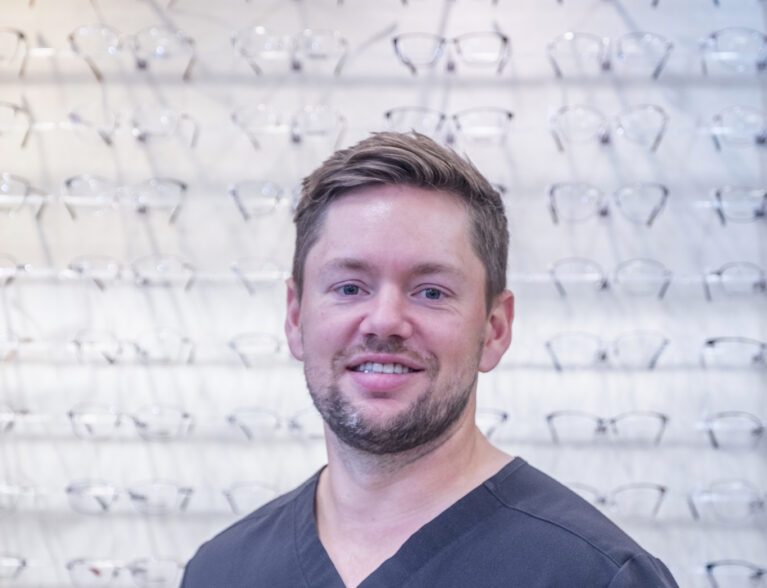
If you are tired of wearing glasses or fussing with contacts, Laser-Assisted in Situ Keratomileusis, commonly known as LASIK, may be able to improve your vision and free you from dependence on corrective eyewear.
The American Academy of Ophthalmology defines this procedure as a kind of surgery that uses a laser to treat vision problems caused by refractive errors. These errors occur when your eye does not refract (bend) light properly.
“LASIK surgery treats refractive error, so it is basically a procedure designed to free the patient from wearing contacts or glasses,” said Dr. Logan T. Vander Woude, ophthalmologist with Center for Advanced Eye Care in Fort Pierce. “Not everyone can tolerate contacts, or they are sick and tired of their glasses. But there are some restrictions, and we determine whether a patient is a good candidate for LASIK through our screening process. You don’t want to do the procedure if your prescription is changing regularly, or you have any sign or family history of keratoconus,” a condition in which the cornea thins and bulges outward.
In order for you to see clearly, light rays must travel through your cornea and lens, which in turn refract the light so it lands on the retina. The retina turns light into signals that travel to your brain and become images. With refractive errors, the shape of your cornea or lens keeps light from bending properly. When the light is not focused on the retina correctly, it causes blurry vision. With LASIK, ophthalmologists use a laser to change the shape of your cornea, which improves the way light rays focus on the retina.
“If you have dry eye, we look at that. If your dry eye is with glasses, usually that will become worse with LASIK. If your dry eye is from contacts, it generally gets better with LASIK,” Dr. Vander Woude said.
“If your eyes are very dry and we think it’s going to be an eye blink problem, we’ll often pivot to something called PRK (Photorefractive Keratectomy) which is like the sister of LASIK. It gives you the same end point, it just does it a different way and comes with different risks and healing times.”
The pre-op visit for LASIK will take much longer than the procedure itself. New technology measures the aberrations and curvature of the cornea and precisely customizes the treatment program around the shape of the cornea. Typically, pre-op takes about two hours because of all the evaluating, while LASIK surgery takes only about 15 minutes. PRK takes only about 10 minutes.
According to WebMD, both LASIK and PRK use a laser to reshape the cornea, the clear outer layer of your eye that focuses light so you can see clearly, but they do it in slightly different ways.
LASIK creates a thin flap in the cornea, while PRK removes the outer layer of the cornea which grows back over time.
“LASIK makes a flap of the cornea and then we lift the flap up and then we reshape the inner part of the cornea called the stroma,” Dr. Vander Woude explained. “We put the flap back down and it heals very quickly. Usually, you can see pretty well within an hour and very well within 24 hours.
We often get results of 20-20 vision the very next day.
“With PRK, instead of making a flap, we take a brush and brush off the surface of the cornea to access the stroma and reshape it just like we do with LASIK. It’s very similar in context, and then because there is no flap, we let that surface regrow. That is the main difference. We put a contact in to protect the eye and keep it as comfortable as possible.
“Depending on how much treatment you have it can be mild or pretty uncomfortable for a few days. Once the surface heals, we take the contact out and you can see pretty good, but it will take about a month to get optimal vision [with the PRK method].”
So, why would someone choose PRK over LASIK to get the same results if LASIK heals so much faster?
“With LASIK, because of that flap, there are certain restrictions that you have to abide by for about six weeks after surgery,” Dr. Vander Woude said. “The flap needs to be protected from damage, so we encourage the patient to wear goggles whenever they are sleeping and to wear protective eyewear when participating in any contact sports.
“You also need to wear goggles while swimming to prevent infection. If you are a lifeguard, firefighter or in an occupation that runs the risk of being hit in the eye, you may opt for PRK which takes a bit longer to achieve the corrected vision but is less restrictive in the recovery period. PRK also has less dry eye occurrences. Both procedures are treated with the same exact laser, so you are getting the same outcome. It’s often a question of lifestyle that can be discussed with your ophthalmologist.”
Since FDA approval in 1999, millions of people have turned to LASIK or PRK to correct vision problems like myopia (nearsightness), hyperopia (farsightedness) and astigmatism with a 98 percent success rate.
Dr. Vander Woude received his medical degree at Nova Southwestern University in Fort Lauderdale and completed his ophthalmology residence at the University of Florida in Gainesville. He then completed a dual fellowship in cornea, refractive and glaucoma surgery at Your Eye Specialist in Plantation, Florida. He is accepting new patients at Center for Advanced Eye Care, 1707 S. 25th Street, Fort Pierce. The phone number is 772-410-2810.



